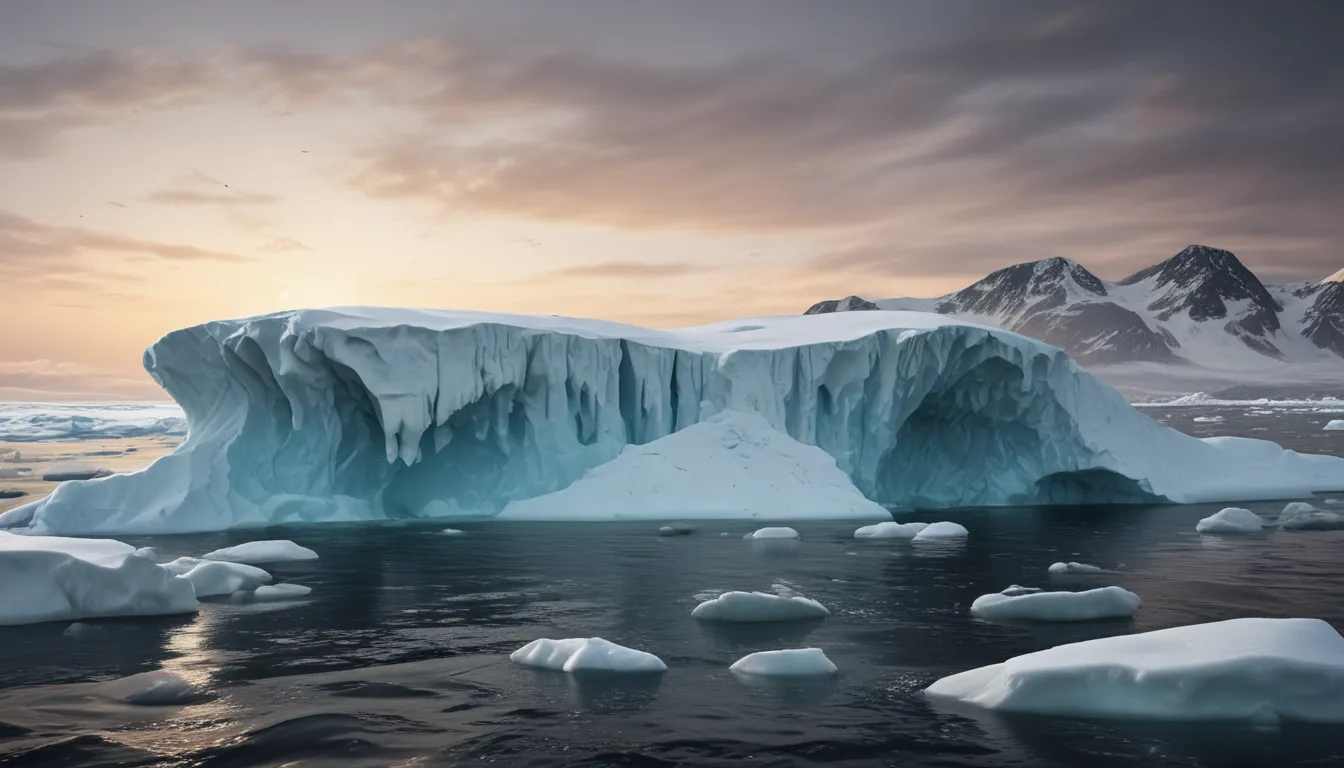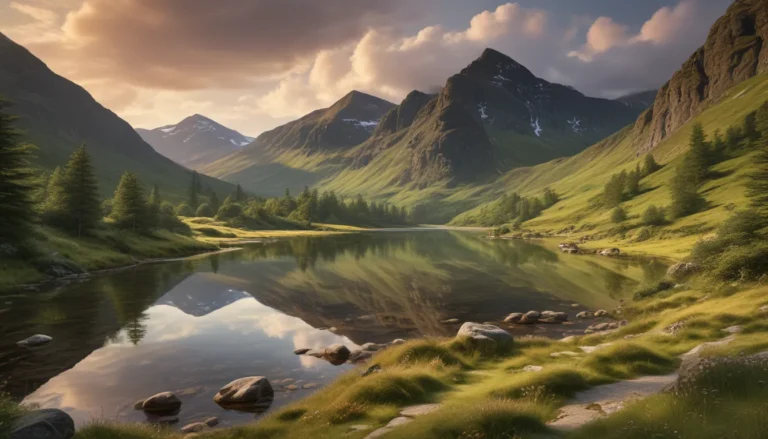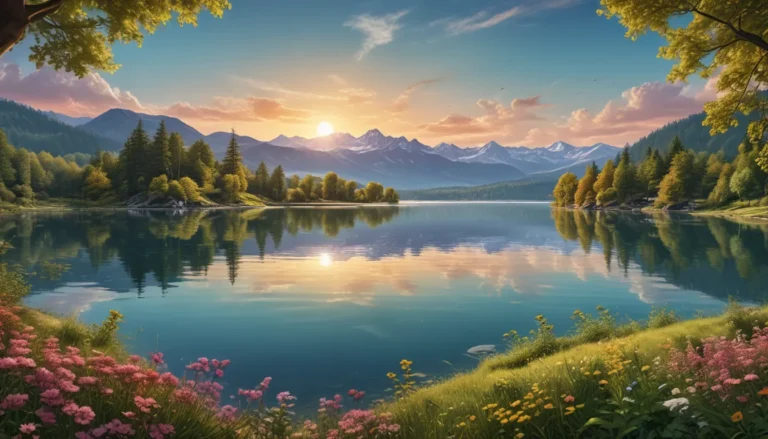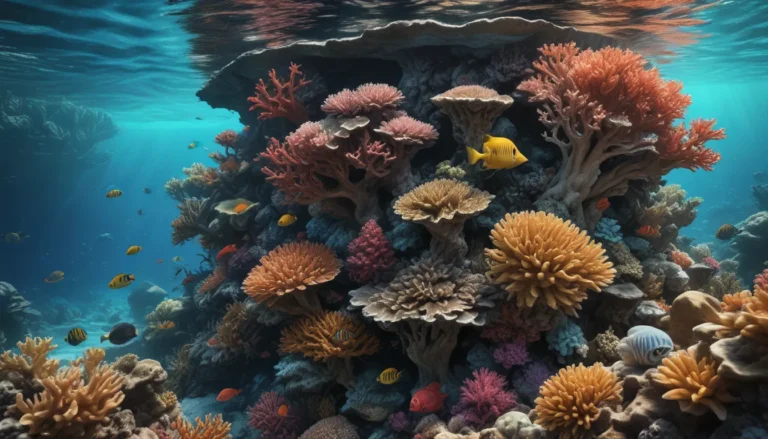The pictures we use in our articles might not show exactly what the words say. We choose these pictures to make you interested in reading more. The pictures work together with the words but don’t take their place. The words still tell you the important facts.
Welcome to the astonishing realm of the Arctic Ocean, a captivating body of water situated at the top of the world. Spanning approximately 14 million square kilometers, this mesmerizing ocean is surrounded by the northernmost regions of Canada, Russia, Greenland, and Scandinavia. Despite being the smallest and shallowest of Earth's five oceans, the Arctic Ocean boasts a unique ecosystem and hosts remarkable natural phenomena that continue to intrigue and inspire.
Delving into the Arctic Depths: Key Takeaways
- The Arctic Ocean is a small, shallow ocean teeming with unique marine life and indigenous communities, facing environmental challenges and potential trade opportunities.
- With its iconic North Pole, extreme daylight variations, and pivotal role in climate regulation, the Arctic Ocean is a cornerstone of global ecosystems and human activities.
Unveiling the Fascinating Facts
The Arctic Ocean: A World of Its Own
Stretching across 14.05 million square kilometers, the Arctic Ocean is roughly 1.5 times the size of the United States. Surprisingly, this seemingly vast expanse boasts an average depth of only 1,038 meters, making it one of the shallowest oceans worldwide.
Embracing Diversity: Marine Life in the Arctic
Despite its icy waters and sea ice, the Arctic Ocean serves as a haven for a diverse array of marine species. From the iconic polar bear to the majestic walrus and the melodious beluga whale, this unique ecosystem thrives with life adapted to withstand the harsh Arctic conditions.
The Majestic Arctic Ice Pack
Year-round, the Arctic Ocean is cloaked in icy beauty, forming a colossal expanse known as the Arctic ice pack. This sea ice not only shapes the ocean's landscape but also plays a vital role in regulating Earth's climate by reflecting sunlight back into space. However, the rapid decline of the Arctic ice pack due to global warming raises significant environmental concerns.
Exploring the Heart of the Arctic: The North Pole
At the heart of the Arctic Ocean lies the mystical North Pole, the northernmost point on our planet. This geographic marvel has captivated explorers and scientists for centuries, adding to the allure and mystique of the Arctic region.
Hidden Treasures: Oil and Gas Reserves
Beneath the icy surface of the Arctic Ocean lie vast reserves of oil and gas, making the region an area of significant interest and debate. As technology advances and ice melts, the exploration and extraction of these resources pose both opportunities and challenges on a global scale.
Dance of Light: Daylight Variations in the Arctic
The Arctic Ocean experiences extreme variations in daylight, with the phenomenon of the "midnight sun" illuminating the region during summer months, while the polar night plunges it into darkness in winter. These stark differences in daylight showcase the unique rhythms of life in the Arctic.
Guardian of Climate Stability
As a key player in global climate regulation, the Arctic Ocean influences ocean currents and helps maintain Earth's temperature by exchanging heat with the atmosphere. Its delicate balance is essential for maintaining the stability of our planet's climate systems.
The Resilient Indigenous Communities
Inhabiting the Arctic region for centuries, indigenous communities such as the Inuit, Yupik, and Saami people have adapted to the harsh Arctic conditions and developed unique cultures. Their sustainable ways of life are deeply intertwined with the ocean's resources, showcasing resilience and harmony with nature.
A Gateway to New Horizons: Shipping and Trade
With the Arctic ice melting, new shipping routes like the Northern Sea Route and Northwest Passage are becoming increasingly accessible, opening up opportunities for maritime trade and transportation. This shift in accessibility holds the promise of enhancing global trade connections between Europe, Asia, and North America.
Facing Environmental Challenges Head-On
The Arctic Ocean grapples with significant environmental challenges, including the impacts of climate change and pollution. The melting of sea ice, rising sea levels, and disruptions to ecosystems pose threats to the delicate balance of the Arctic ecosystem, affecting marine life and indigenous communities.
Embracing the Wonder of the Arctic Ocean
In conclusion, the Arctic Ocean stands as a captivating and enigmatic body of water filled with astonishing facts and wonders that continue to amaze and inspire. Whether it's the unique marine life, extreme temperatures, or vital role in climate regulation, the Arctic Ocean offers a wealth of opportunities to deepen our understanding of the natural world.
Exploring and appreciating the Arctic Ocean highlights the importance of conservation efforts to protect its fragile ecosystem for future generations. By raising awareness and promoting sustainable practices, we can ensure that this awe-inspiring body of water and its inhabitants thrive for years to come.
Your Arctic Ocean Adventure: FAQs
- How cold does the Arctic Ocean get?
-
The Arctic Ocean experiences extremely cold winter temperatures ranging from -40°C to -30°C (-40°F to -22°F).
-
What is the significance of the Arctic Ocean?
-
Acting as a giant reflector, the Arctic Ocean plays a critical role in regulating Earth's climate and serves as a crucial habitat for diverse marine species.
-
Are there permanent residents in the Arctic Ocean?
-
While there are no permanent human residents in the Arctic Ocean, indigenous communities like the Inuit and Saami people have inhabited the surrounding Arctic regions for millennia.
-
Can you find polar bears in the Arctic Ocean?
-
Polar bears are known to inhabit areas near the Arctic Ocean, particularly on ice floes and coastal regions, showcasing their adaptation to the cold Arctic climate.
-
How does the melting of Arctic sea ice impact the world?
- The melting of Arctic sea ice contributes to rising sea levels, altered ocean currents, changes in weather patterns, and affects marine ecosystems globally, highlighting the interconnectedness of our planet's climate systems.
Embark on a Journey of Discovery
The Arctic Ocean beckons with its mysteries and marvels, inviting us to explore its depths and uncover its secrets. As we delve into this captivating realm, we gain a deeper appreciation for the interconnectedness of our planet's ecosystems and the importance of preserving our natural world.
Join us in celebrating the wonders of the Arctic Ocean and embarking on a journey of discovery that transcends boundaries and inspires a shared commitment to conservation and sustainability. Together, let's ensure that the Arctic Ocean remains a beacon of beauty and biodiversity for generations to come.






